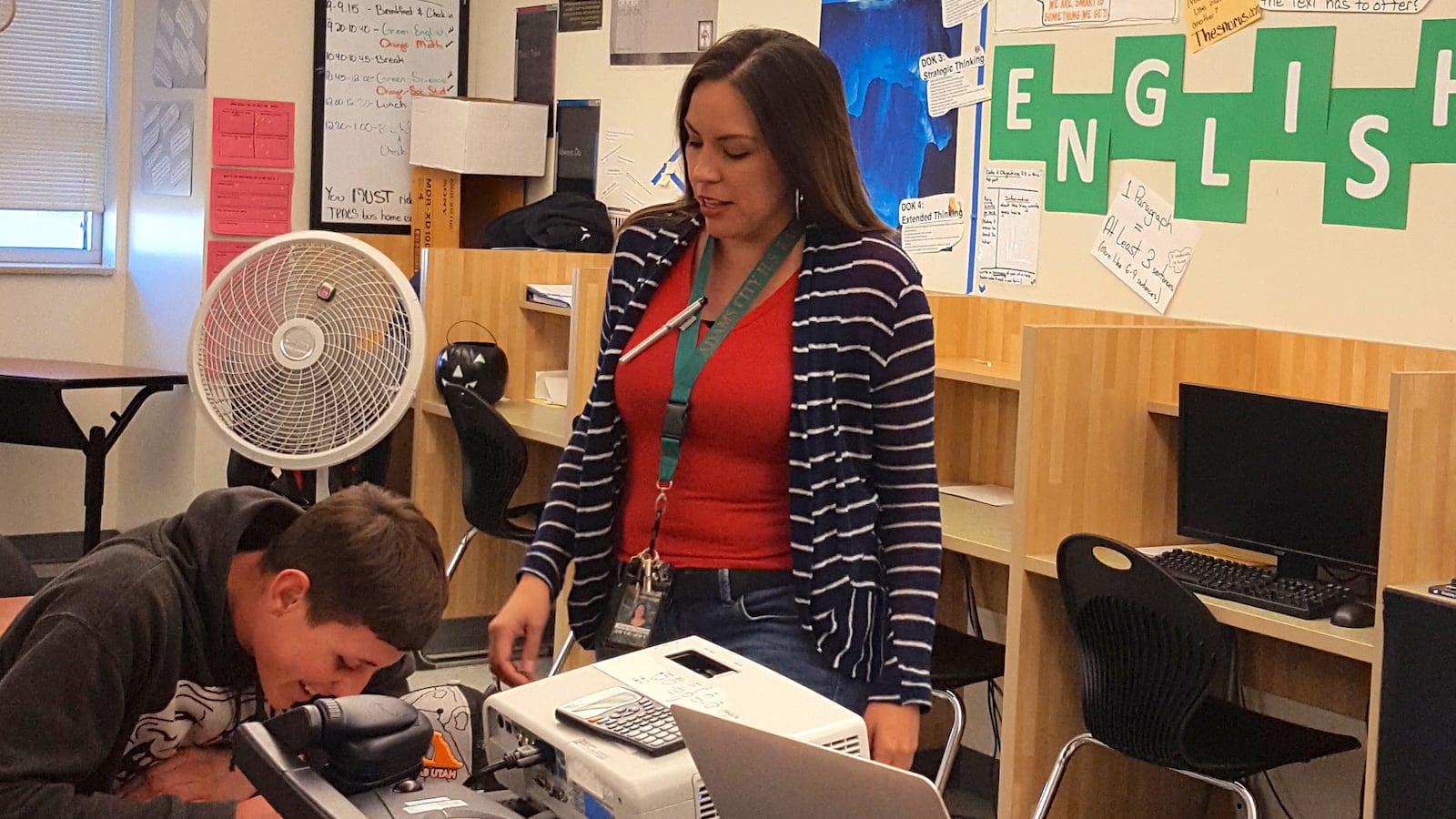Amanda Gonzales is a high school special education teacher in Commerce City, Colorado who specializes in working with students with serious emotional disabilities.
Just before the start of a four-day weekend a few weeks ago, the principal of the high school where I teach called an emergency meeting.
I thought it might be a last-minute reminder to file crucial paperwork. But he had actually called the staff together to tell us he didn’t want any of us to work over the weekend, though he knew some of us would.
He told us that he hoped we would take the time to enjoy our families. We would need that energy, he knew, to carry ourselves through the next month, with its 12-hour parent conference days and exhausting afternoons developing final exams.
I found my eyes unexpectedly full of tears.
It’s not that I don’t love my job, or this time of year. Colorado fall, I love so many things about you: the crisp air, the golden red leaves falling from the trees, the it’s-still-warm-enough-to- wear-a-sleeveless-top-with-a-cute-cardigan weather. October means I can finally fill my home with the scents of pumpkin pie and mulled cider candles without my family thinking I’m crazy.
I also happen to despise you, dear autumn, because you usher exhaustion and frustration into my school building.
Thanksgiving comes at a perfect moment to pause and appreciate what’s going right. Read what teachers said they were thankful for last year, then add your voice for this year.
We start school the first week of August. By November, not only is the honeymoon over, but at least in my classroom, we’re already having fantasies of divorce.
We teachers return to the school year with a new pair of work shoes, fresh dry-erase markers, and most of all, renewed hope. We’re prepared with our most creative and engaging plans, and we are sure that our students will achieve growth scores that will take the eyes of the education department off our school.
By early November, there are midterms to administer and student tears to wipe when they see their grades. There are final exams to finish, 7:15 a.m. fire drills to attend, special education re-evaluations to write, homecoming parades to oversee, and dances to chaperone. There are state testing accommodations to request, reams of quarterly data to analyze, classroom observations to look good for, and district meetings to attend.
This year, teachers faced one more challenge: helping students process the result of a presidential election that left some of them worried about the future.
The copy machine, of course, remains broken through it all. And somehow we need to ensure that our students get the very best of us each and every day.
In other words, by the time pumpkin spice lattes make their appearance, so does the desire for sleep. And summer break.
Student and teacher absences rise during this stressful season, despite incentives to get students to attend for the all-important October “count” that determines how much state funding we receive. Behavior incidents skyrocket, suspensions follow, and it’s common to hear both students and teachers say they are “over it.” When substitute teachers are in short supply and we’re left filling in for colleagues during our planning periods, we get stretched even thinner.
There are no easy solutions to this exhaustion. What helps me is to step back and remember why I push through it, and to wait for that special moment when a great lesson or a word of praise reaches one of my students and instills a little hope.
Those moments add up — with or without a working copier.
About our First Person series:
First Person is where Chalkbeat features personal essays by educators, students, parents, and others trying to improve public education. Read our submission guidelines here.


